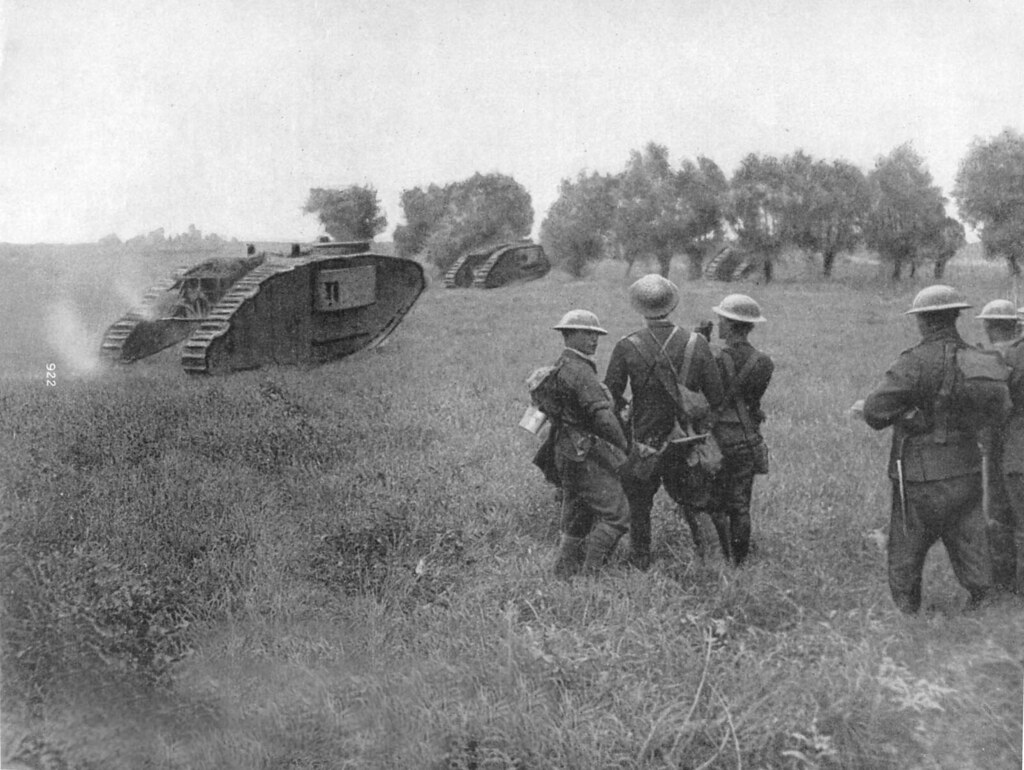Fantastic machines of the First World War Part 2

“Land cruiser” Hetherington
In England, the first draft of the “land cruiser” was presented by the captain of the Royal naval air service Thomas Hetherington. The thickness of its armor was 80 mm. In each of the three towers were located on two 102-mm guns.
But the wheels had only three: two in front, 12 meters in diameter – lead and one rear – steering. Two diesel engines were to provide a “cruiser” speed up to 12 kilometers per hour.
When the project examined, it was found that the mass of the machine can reach 1000 tons, and in addition, if the height 14, length 30 and a width of 24 meters it will be the perfect target for German artillery. Therefore, the British built a scale model of the… tree, and all the work on the “cruiser” Hetherington decided to stop, which he did in June 1915.
Tank Skeleton
But in the United States built devotional “tank skeleton”, which had tracked the contours of the large size, connected via pipes. Between them was a small armored cabin cubic forms with a tower for 37-millimeter guns.
The designers felt that enemy missiles will fly between the tubular support and into the housing and the tower will not fall, but due to the large throughput, it is the same as English “lozenge” tanks.
Then they built a three-wheeled tank with a steam engine, and, most surprisingly, almost the exact same car, similar to a tricycle, was made by the Germans. But the tank and left crawler machine. Wheels, even large, didn’t fit him!
Tanks Makfa
Had not been taken and projects Robert Francis Makfa – talented Canadian engineer, who had, however, a cantankerous and quarrelsome nature. Already at the first project was the propeller, that is, the machine was conceived as an amphibian! There is a screw and at the other project, and it was supposed to be raised and lowered to protect from damage when hitting the ground. Interestingly, the main feature of the last two of his cars was chassis on three tracks.
Whereby the caterpillar was supposed to play the role of a steering device, that is, to turn in different directions and also change the position relative to the housing in a vertical plane. The designer has provided a special cutter for barbed wire and folding up the nose of the armor plates to protect the steering of the track and its drive wheel.
The other project was a tank on the four tracks, but the two front ones were arranged one behind the other. Caterpillar front had a slope of 35 degrees and should facilitate overcoming vertical obstacles, and all the others were given low pressure from a heavy machine on the ground.
The weapons on it could be installed in the housing, and the protrusions on either side of him. But this project seemed too sophisticated, so in the end, he refused. And generally interesting would be a machine, in any case, is probably no worse than the mass-produced British tank Mk. I, and all the other tanks in this series.
Here is how a lot of things was invented by designers at the very beginning of the First world war, but these and many other proposals remained only on paper, while delusional was not all!
